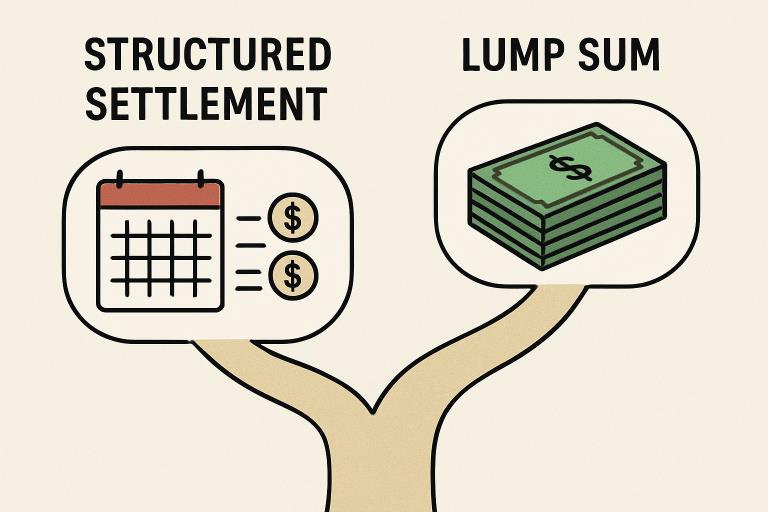Now Reading: Proving Emotional Distress in Personal Injury Cases: Why It’s Tricky and How the Story Gets Told
-
01
Proving Emotional Distress in Personal Injury Cases: Why It’s Tricky and How the Story Gets Told
Proving Emotional Distress in Personal Injury Cases: Why It’s Tricky and How the Story Gets Told

Emotional wounds are quieter than broken bones, but they can cut just as deep. The problem in court is that psychological pain doesn’t come with X-rays or neat hospital bandages—so the storytelling has to be impeccable. This piece walks through why emotional distress is a legal uphill climb, what judges and juries look for, and how the drama of a claim is built or broken in the courtroom. Think of it as a behind-the-scenes look at a genre where the evidence is invisible and the stakes are very real.
The subjectivity of emotional harm
Unlike a cast or a scar, emotional injuries are internal—felt but unseen. Anxiety, depression, nightmares, and PTSD show up in behaviors and in stories, not on a radiology plate. That makes causation a puzzle: did the incident cause the mental harm, or was it just the tipping point for something that already simmered beneath the surface? Courts often demand clear links between the defendant’s conduct and the plaintiff’s psychological state, and because human minds are complicated, meeting that demand can feel like proving a plot twist in a mystery novel.
Jurisdictions differ in how sympathetic they’re willing to be to these invisible injuries. In some places you can sue for emotional distress on its own; in others you need a physical injury to anchor the claim. The variation adds uncertainty—what works in one courtroom might fail in another—so plaintiffs and their counsel must be savvy about local rules.
Why medical documentation matters (and why people don’t always have it)
Medical records, therapy notes, and psychological evaluations are the hard currency of emotional distress claims. They provide dates, diagnoses, treatment plans, and professional opinions that convert subjective suffering into something the court can weigh. A contemporaneous record—showing symptoms and treatment soon after the incident—dramatically strengthens the narrative that the event caused the harm.
But many people avoid mental-health care for reasons that are painfully mundane: stigma, cost, or simply not recognizing the seriousness of their symptoms until months later. That delay can give defense lawyers a field day, suggesting the distress was unrelated or exaggerated. So the presence—or absence—of timely professional documentation often becomes the hinge on which a case swings.
The legal thresholds: rules aren’t uniform
Every jurisdiction writes its own rules about what counts as compensable emotional distress. Some courts require a physical manifestation of injury; others allow purely psychological claims under certain circumstances, such as when the defendant’s conduct was particularly outrageous. Illinois, for example, tends toward a conservative approach where emotional distress often needs to be tied to a physical injury or particularly egregious behavior by the defendant.
Those rule differences aren’t just academic—they shape strategy. Plaintiffs and their attorneys must know the local playbook: whether to frame the case as tied to physical injury, to argue outrageous conduct, or to emphasize ongoing psychiatric harm that demands compensation.
Expert testimony: the experts who translate feelings into evidence
Because emotions aren’t self-evident, expert witnesses—psychiatrists, psychologists, licensed therapists—often become the translators in court. They explain diagnostic criteria, symptom severity, prognosis, and causal connections. A compelling expert can make the jury feel what the plaintiff endures; a weak one can make the jury doubt everything.
Hiring an expert has its costs and risks. It’s expensive and opens the door for the defense to hire their own experts who may offer rival explanations. The battle of experts is as much about credibility and presentation as it is about clinical detail: who seems more believable, whose methods are cleaner, and who tells a story the jury trusts.
Jury perception and bias: the human element
Jurors are not blank slates. They bring cultural attitudes, personal histories, and innate skepticism to the bench. Visible injuries are easy to empathize with; invisible ones require the jury to imagine suffering in another’s mind. That mental leap can be difficult. Some jurors may downplay psychological harm as “normal” stress, while others may be influenced by bias against people who seek therapy.
Cultural attitudes toward mental health further complicate matters. In communities less comfortable with psychological diagnoses, emotional distress claims can face an uphill battle regardless of documentation or expert testimony. Winning over a jury often requires not only solid evidence but also a persuasive, humanizing narrative.
The attorney’s role: constructing the narrative
A skilled advocate does more than submit documents; they craft a coherent story that ties incident to injury, behavior to diagnosis, and treatment to need. Local experience matters—an attorney familiar with county judges, jury pools, and the nuances of state law can marshal the right mix of medical proof, witness testimony, and courtroom storytelling.
That said, legal representation is not just about theatrics. It’s about strategic decisions: when to demand expert reports, which medical providers to subpoena, and how to present a timeline that removes doubt about causation. The lawyer’s job is to make the invisible visible, without overreaching or inviting skepticism.
Long-term impacts: why emotional injuries deserve weight
Emotional distress can ripple across a person’s life—relationships fray, work performance falters, and daily routines become battlegrounds. Chronic stress and untreated trauma can also contribute to physical health problems over time, from cardiovascular strain to immune dysfunction. Those long arcs matter in court because they affect both current damages and future care needs, and they help explain why mental suffering is not merely ephemeral.
This temporal dimension—showing that harm persists and may require ongoing treatment—often makes the difference between a sympathetic anecdote and a compensable injury. Courts that appreciate these longer timelines are more likely to award meaningful recovery.
The reality of the fight: common hurdles and how they show up in practice
In practice, emotional distress claims face repeating challenges: delays in seeking treatment, gaps in documentation, conflicting expert opinions, skeptical juries, and varying local legal standards. Each of those obstacles has to be anticipated and addressed. Sometimes the defense will argue that life events or pre-existing conditions explain symptoms; sometimes the dispute focuses on how serious the distress truly is. The courtroom becomes a stage where credibility, timing, and the quality of the medical narrative all compete for center stage.
FAQ
What counts as emotional distress in a personal injury case?
Emotional distress includes diagnosed conditions like anxiety, depression, PTSD, and serious disruptions to daily life caused by the defendant’s conduct. Courts look for evidence tying those conditions directly to the incident.
Do I need physical injuries to claim emotional distress?
That depends on where you are; some jurisdictions allow standalone emotional-distress claims, while others require a physical injury or particularly outrageous conduct. Local rules matter a great deal.
How important is seeing a mental-health professional?
Very—contemporaneous records and professional diagnoses give objective weight to what is otherwise subjective, and they make it far easier to prove causation in court. Delays or gaps in treatment can weaken a claim.
Are expert witnesses always necessary?
Not always, but they often are; experts translate symptoms into clinical terms and explain causation, which juries and judges rely on to evaluate the claim. Without credible expert testimony, emotional claims can struggle.
Will juries believe emotional-distress claims?
Juries can be skeptical because the harm is invisible, but a clear narrative supported by documentation and credible experts can persuade them. Presentation and credibility are crucial.
Can emotional distress have long-term damages?
Yes—emotional injuries can produce chronic effects on relationships, work, and even physical health, which can justify compensation for ongoing care and lost quality of life.





















